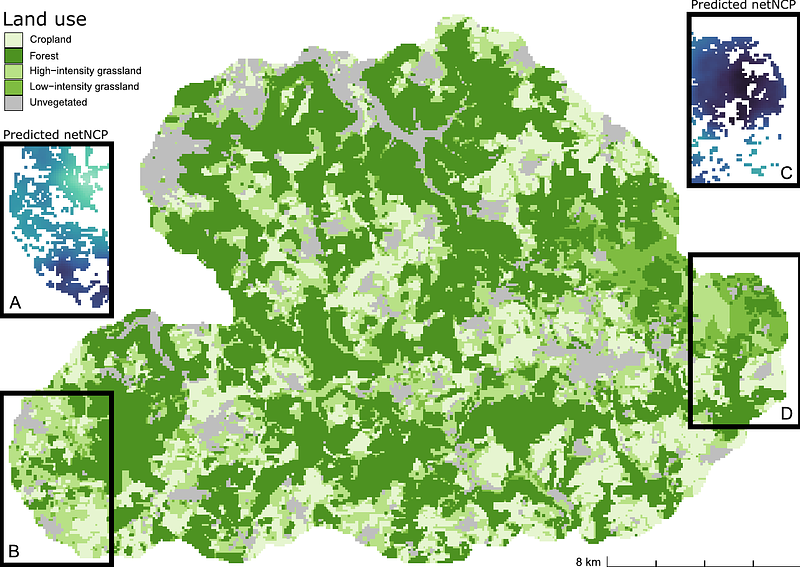Mobile species' responses to surrounding land use generate trade-offs among nature's contributions to people

Mobile species' responses to surrounding land use generate trade-offs among nature's contributions to people
O'Brien, S. A.; Tylianakis, J. M.; Anderson, D. P.; Boesing, A. L.; Lai, H. R.; Le Provost, G.; Manning, P.; Neyret, M.; Blüthgen, N.; Jung, K.; Magdon, P.; Mueller, S.; Scherer-Lorenzen, M.; Schenk, N.; Lavorel, S.
AbstractAgricultural landscapes provide material, non-material and regulating contributions that affect human wellbeing. The responses of these nature\'s contributions to people (NCP) to land-use patterns depend on supporting biota with different habitat requirements, generating trade-offs and synergies. Predictions of NCP trade-offs could inform land-use decisions, but these do not typically account for the effects of land-use patterns on the movement of NCP-providing species, nor for interactions among NCP providers. To explore spatial trade-offs and synergies in eight indicators of NCP, we used Bayesian models that allow for interactions among land uses and among NCP using data from 150 grassland sites across rural Germany. We found that spatial arrangements of forest and open habitat influenced many NCP: acoustic diversity, birdwatching potential, natural enemy abundance and pollination. In particular, the amount and proximity of land uses in the surrounding landscape, especially forest and open habitat, drove the supply of most NCP. However, NCP provided by smaller-bodied taxa (herbivory and pathogen infection) responded weakly to landscape factors. Multiple NCP provided by a given taxon responded differently to their surrounding landscape (e.g. bird-provided caterpillar predation and seed predation), leading to trade-offs among NCP over short distances ([≤]60 m). These were caused by different rates and directions of response to amount and location of land uses. Resulting spatial predictions revealed that grassland-dominated or mixed forest-grassland areas better maximize beneficial NCP and minimize detrimental NCP across landscapes than purely forest-dominated areas. This suggests promoting semi-natural vegetation in agricultural landscapes to provide greater-than-additive benefits to net NCP supply.